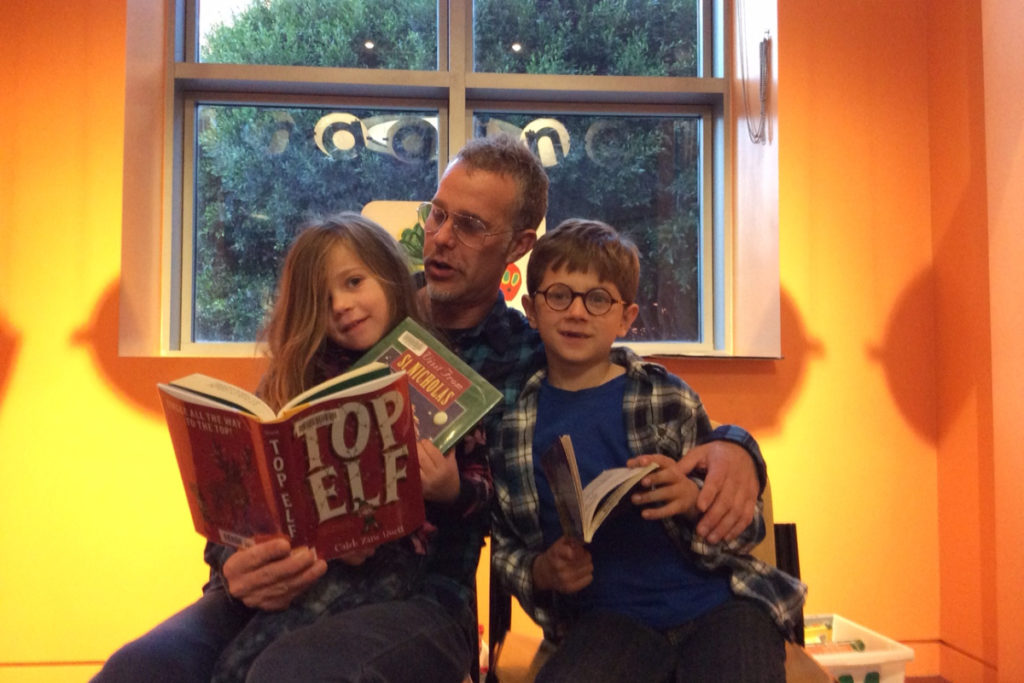I work seven days a week. I barely get by. I have no health insurance. I didn’t bother paying income taxes last year. For many of us, life inside America’s broken economic system is slavery. If that term seems exaggerated to you I’d venture to guess you haven’t been where I’ve been.
My two young children live with me three nights a week in a residential hotel in a high crime area in San Francisco. We occupy 180 square feet of space and share a toilet and shower with other occupants of the building. Yet, my children’s other home is a spacious apartment inside a Victorian mansion in Lower Pacific Heights owned by my ex-wife’s parents. Poverty, in all its forms, is highly complicated. Lack of affordable housing, the decades-long stagnation in earnings for the American worker as well as my own choices have led me to where I am at today.
Before living at the SRO I was without a home. Unhoused. Homeless. I refused to leave the city where my kids live exorbitant rent be damned. I couch surfed. I slept in my car. I used my old key to access the side passageway of my former home and slept outside, sheltered by the fort my older brother and I built for my son.
The raised fort stands eleven feet tall with a 6’ by 6’ footprint (ground area). A wooden ladder I bolted to the inside of the fort leads to the trap door entrance. I open the trap door and make my way down. It’s about 4:30 a.m. The birds woke me up. Dire warnings to back off claimed territory. My territory is a Prius. I am grounded behind the wheel for most of my time here on earth. I am barely a man. Just an entity who gives rides, drinks coffee and pays bills.
That morning I received a text with some good news that made me feel anxious and defeated. I’ve been on the waiting list at a homeless shelter, a mere nine blocks from my former apartment in San Francisco’s Lower Pacific Heights. Four hundred people were ahead of me when I got on the list over two months ago. The text is from the city letting me know my number has come up, and if I don’t check in by 4:30 p.m., I lose my bed.
Around 2 p.m. I leave my car parked in Low Pac Heights. Parking near the shelter is mostly metered. My residential sticker is still good, and I pause to acknowledge this small victory. I walk a few blocks and cross Van Ness Avenue, the north-south thoroughfare that runs from Market Street to the Bay. Once across Van Ness, I am in the Polk Gulch, which runs along the edge of Russian Hill and Nob Hill, two upper crust neighborhoods. The shelter borders the Tenderloin and the Polk Gulch. The Tenderloin, also known as the TL or the L’s, is a neighborhood with high crime and heavy drug use, though there are many positive community services there: renovated playgrounds, a local art revival scene, soup kitchens, outpatient clinics with free or low-cost acupuncture and chair massage, a writing and tutoring program for under-resourced students. These gems situated among the underprivileged community give the neighborhood a sense of pride and hope.
A dead-end alley that once stored dumpsters and attracted dumpster divers is now home to the Tenderloin National Forest. The Tenderloin National Forest, or TNF, has about a dozen mature trees, including a redwood, and provides a safe, healthy spot for residents of this gritty section of the city. The urban forest is surrounded by residential buildings and hotels that house homeless youth with mental health issues, low-income seniors, and other disenfranchised populations.
I delay checking in at the shelter by going to the convenience store for a cup of coffee. I am feeling anxious. I was briefly a resident at this same shelter over a decade ago when I was struggling with heroin and crack addiction and wound up on the streets. Earlier this year, just before winter break, my son’s Kindergarten class made care packages for the folks at this shelter. We contributed socks for the care packages. I know from experience the warm, comforting feeling of new socks on cold, lonely feet.
Now, over ten years later, the same Middle-Eastern guy is behind the counter at the coffee shop. A little heavier, hair and beard beginning to grey, but still gregarious and wearing the same type of get-up—a sky blue Adidas track and field outfit. He is telling a hard-looking woman his uncle won’t let him do credit on alcohol anymore. “Sorry, Mama, new rules from the boss.”
I pour myself a cup of coffee and bring it to the counter.
“That it, boss?” he says.
“Yep, that’ll do it.” I give him two bucks. He gives me fifty cents change. I smile.
“Nice to see not everyone has raised their prices.”
“Best deal in the Loin.”

“Cheers!”
I walk up the block and see the shelter residents across the street smoking and congregating in front of the building. I lag again and Google my soon-to-be resting place. The shelter is run by Episcopal Community Services. Breakfast and dinner is served. Un-housed adults can access case management and mental health services. I make a mental note to inquire about case management, hoping they can help me land permanent housing. I read about their sister shelter, The Sanctuary. The website reads: “Many of those who stay at Next Door are addressing substance abuse problems, and some are coping with mental health issues and chronic medical conditions.” They forgot “working class adults who can no longer afford rent in San Francisco.” Whatever sanctuary I can find will have to come from within myself. ≠
This is Part 1 of this piece. For more from Andrew Dertien you can visit his blog at https://sfsrofamilies.wordpress.com/

